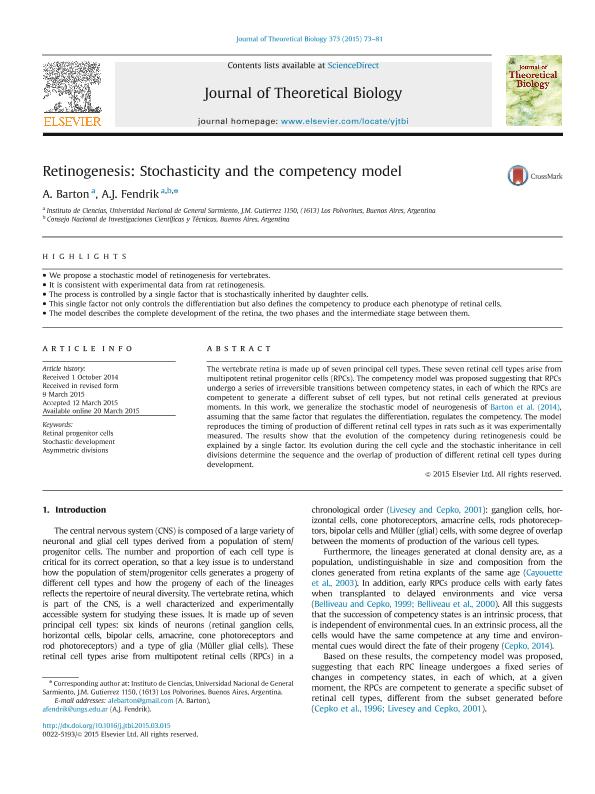Artículo
Retinogenesis: Stochasticity and the competency model
Fecha de publicación:
05/2015
Editorial:
Academic Press Ltd - Elsevier Science Ltd
Revista:
Journal of Theoretical Biology
ISSN:
0022-5193
Idioma:
Inglés
Tipo de recurso:
Artículo publicado
Clasificación temática:
Resumen
The vertebrate retina is made up of seven principal cell types. These seven retinal cell types arise from multipotent retinal progenitor cells (RPCs). The competency model was proposed suggesting that RPCs undergo a series of irreversible transitions between competency states, in each of which the RPCs are competent to generate a different subset of cell types, but not retinal cells generated at previous moments. In this work, we generalize the stochastic model of neurogenesis of Barton et al. (2014), assuming that the same factor that regulates the differentiation, regulates the competency. The model reproduces the timing of production of different retinal cell types in rats such as it was experimentally measured. The results show that the evolution of the competency during retinogenesis could be explained by a single factor. Its evolution during the cell cycle and the stochastic inheritance in cell divisions determine the sequence and the overlap of production of different retinal cell types during development.
Palabras clave:
Asymmetric Divisions
,
Retinal Progenitor Cells
,
Stochastic Development
Archivos asociados
Licencia
Identificadores
Colecciones
Articulos(SEDE CENTRAL)
Articulos de SEDE CENTRAL
Articulos de SEDE CENTRAL
Citación
Barton, Alejandro; Fendrik, Alejandro José; Retinogenesis: Stochasticity and the competency model; Academic Press Ltd - Elsevier Science Ltd; Journal of Theoretical Biology; 373; 5-2015; 73-81
Compartir
Altmétricas




